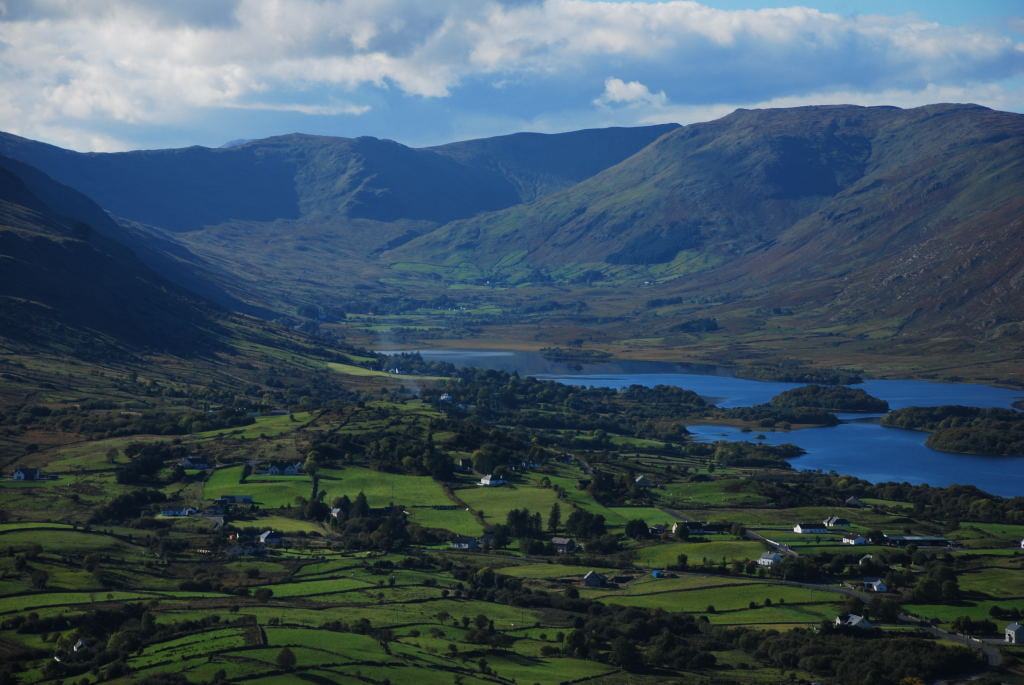66 Million Years Ago To Today
Ireland Under The Ice
Further sediments were likely deposited over the bedrock we can see today during most of the Palaeogene and Neogene periods (66 million years ago to today). However, for most of Ireland, we can only find record of sediments from the last 30,000 years. The main reason for this lack of record are the extensive glaciations that took place all over Ireland during the end of the most recent geological period, the Quaternary, which started 2.6 million years ago. As global climate was cooling, as evidenced in marine sediment core records and most importantly in ice core records, extensive ice sheets developed in the higher latitudes. These ice sheets responded to climate forcing that showed cycles of glacial and interglacial periods with warmer or even temperate conditions in the latter.
These cycles have settled to be about 100,000 years long with a short interglacial period compared to the glacial one.
We have very limited information of the penultimate glaciation in Ireland, but we do have extensive information of the last one, which was most extensive during the Last Glacial Maximum, about 24,000 to 21,000 years ago. Extensive amounts of sediments were deposited under the ice sheets and can be found throughout Ireland. These sediments are known as glacial till and are composed of sediments of different sizes, from mud and silt to sand or even boulders. These large fragments of rocks can be attributed to their region of origin and have allowed geologists to trace the movement of the ice. Sedimentary ridges of sand and gravel marking the edge and extent of the ice sheets were found on the marine shelf offshore, up to 150 km away from modern Irish shores. There is evidence of extensive weathering of the bedrock of Irish mountains with only a few areas around some of the peaks with loose sediments left in situ (known as block fields). All other loose sediments were carried away by the moving ice. This collection of evidence shows that at its maximum, the ice covered the whole of Ireland, most of the mountains (leaving only small peaks outcropping over the top of the ice) and extended up to 150 km offshore. This last ice sheet eroded the bedrock, shaped the landscape and carried away an enormous amount of sediments offshore.
